Scientists finally figured out the mystery behind the Pizzly Bears and it’s a doozy
Science
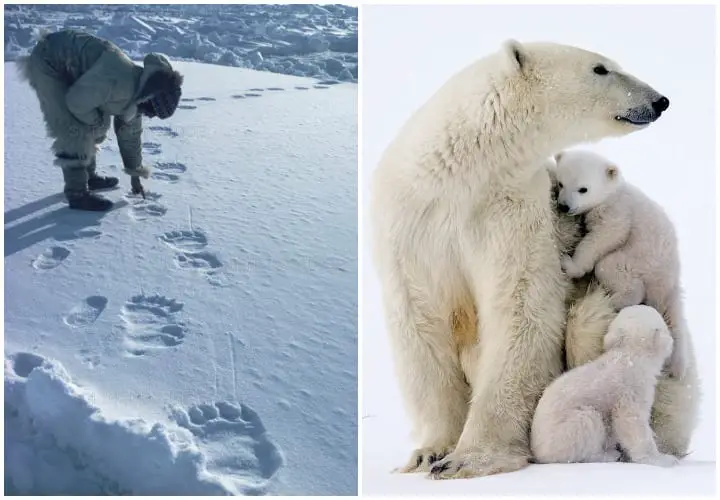
1. It all started way up in the Northern Territories, Canada
Science Source/Daily Mail Online
For the past several years, people have been spotting strange bears in the Arctic. Then, in 2010 an Inuit man came across one of these wild creatures and scientists were intrigued by what he’d found. The peculiar bear was the offspring of a polar bear and something else entirely. Soon enough, people were blaming climate change for this hybrid. But as scientists researched it even more, and traced the hybrids back to their origin, the story got stranger. The truth behind the hybrids was shocking and disturbing.
This strange polar bear tale takes place in the frozen Canadian North, along coasts in the Arctic Circle. Here it’s regularly below zero degrees Fahrenheit, with long summer days and long winter nights. There’s snow and ice and everyone’s Canadian nice.
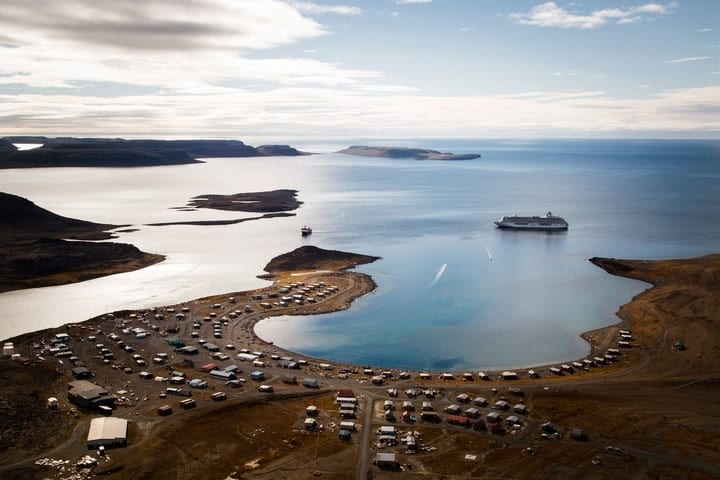
Katie Orlinsky/Bloomberg
David Kuptana, an Inuit man, lives here on Victoria Island, the eighth largest island in the world. The island only has a population of about 2,000 people, despite being about the same size as Idaho (which has over a million people). It’s almost amazing a bear could find people on this island, but this peculiar bear did just that…
2. The Inuit people of the small community Ulukhaktok
Kuptana was born in an igloo in the small coastal community of Ulukhaktok, where only a few hundred people live. Ulukhaktok is far, far north of Montana and along the course of the Northwest Passage, the northern sea route between the Atlantic and Pacific oceans.
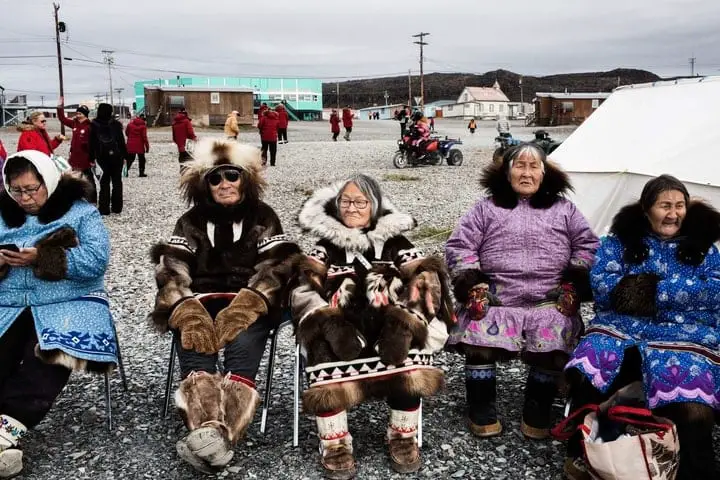
Katie Orlinsky/Bloomberg
The Ulukhaktok community is home to the northernmost golf course in the world and is well known for its Inuit art, such as musk ox-horn carvings and stone-cut prints. But up north, where there are so few people and it’s quite remote, groceries can be extraordinarily expensive, so many people live off the land. And the land has polar bears.
3. Hunting polar bears in the Arctic
In the north, people have a different relationship to polar bears than those who’ve only seen them in pictures. But as the Arctic gets warmer, polar bears spend more time on land because there’s less ice in the water. This in turn puts them near humans more often, causing further polar bear encounters.
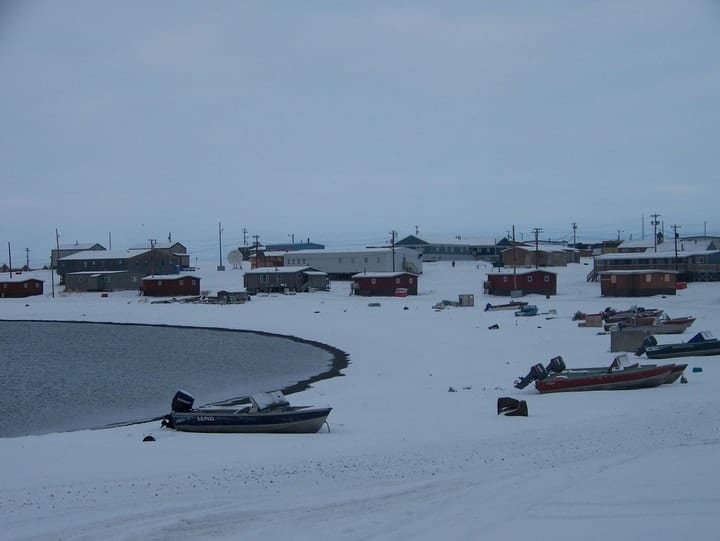
Arctic Char Inn
For the Inuit people, polar bear encounters have long been part of their culture. They hunt polar bears, to eat their meat and use their fur for pants and boots. But since polar bears are currently vulnerable to extinction, laws about polar bear hunting have changed. However, Inuit hunters still hunt polar bears, which is how Kuptana found the extraordinary bear.
4. Kuptana set out on a hunting expedition, but got a big surprise
The Ulukhaktok community gets about a dozen hunting tags for polar bears each year. For a while, Americans would come up and pay to use them to hunt bears. People would book years in advance. But the U.S. outlawed imported polar bear sport trophies, so now it’s mostly the locals who use the tags.
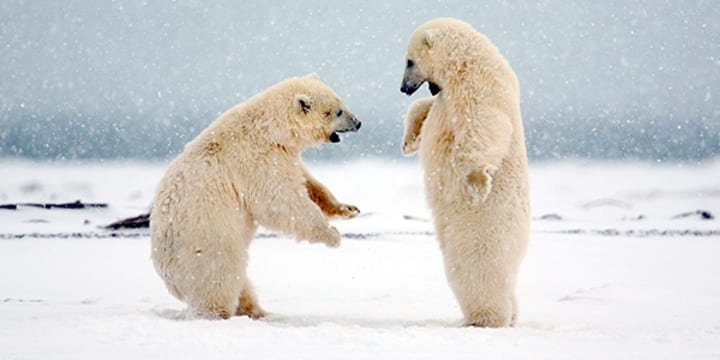
Michael Henry
Kuptana had been hunting polar bears for years, but in April 2010 he saw a creature he’d never seen before. That day, Kuptana and his wife set out to hunt bears, like normal. They got on their snowmobiles and drove across the sea ice to a cabin on an island. They planned to stay there while hunting, but when they arrived they saw something very unexpected.
5. Five ransacked cabins and the mysterious bear who wrecked them
Someone, or something, had broken into the cabin, looking for food. Kuptana realized it had been ransacked by a bear. He and his wife decided not to stay there and instead drove their snowmobiles to a different cabin. Only, this one had also been ransacked. There were fresh bear tracks around it and the mattress had been pulled outside. One of the windows was broken.
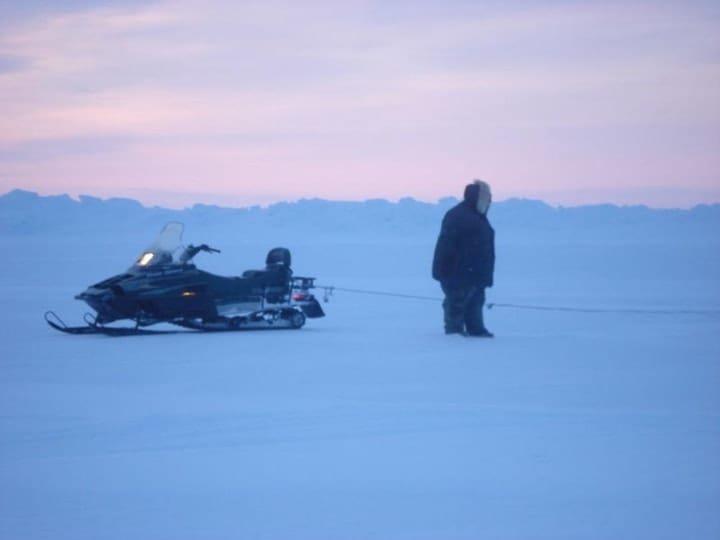
Field & Stream
This was unlike anything Kuptana had seen a polar bear do before. But he continued on to the next cabin. The third, fourth, and fifth cabins were all ransacked and nearby were bear tracks leading toward the community. But at the sixth cabin, Kuptana saw something new. The animal was still there, but something about it didn’t look quite right…
6. The bear didn’t look like any polar bear Kuptana had seen
The bear that Kuptana found was blonde with dark paws and dark eyes. It was certainly not a polar bear, but something stranger. It ran and he chased after it on his snowmobile. Kuptana thought it was a grizzly bear, because he’d never caught one before. Whatever it was, it certainly was the worst Airbnb guest ever.
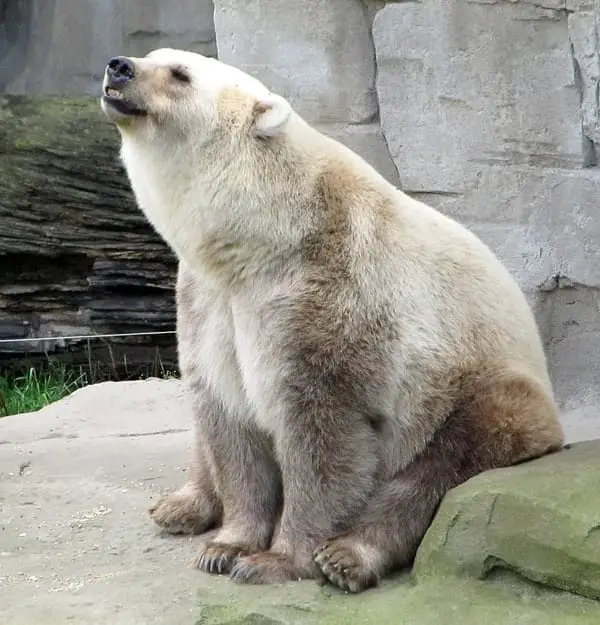
My Polar Bear Friends and Friends of Polar Bears
But Kuptana was scared, because he’d never seen a bear that acted like this before. It was ransacking cabins and heading toward his community. He shot and killed the bear, then took it to the local government officer in town. The officer took one look at it and realized it was neither polar bear nor grizzly bear, but something else entirely.
7. To figure out what the animal was, they sent it in for a DNA test
The government officer in Ulukhaktok believed this bear was a hybrid, so they sent it’s DNA away to be tested. What they found was that years before Kuptana found this strange animal, around 20 had been born in captivity. Two of these animals were born in 2004 in Germany’s Osnabrück zoo, named Tips and Taps.
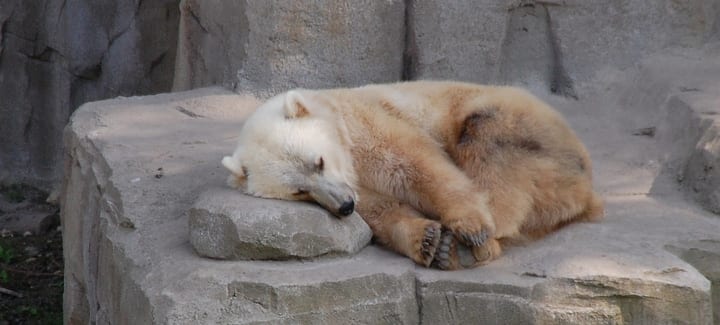
Stefan David/Flickr
Some zoos in Russia, Israel, Germany, and other European countries keep different species of animals in the same enclosure and sometimes that results in hybrid babies, like ligers. But the animal Kuptana found was no liger. Tips and Taps’ parents had been kept in the same enclosure for 24 years before they mated and made the two hybrids, so where was this wild mystery bear from?
8. Back in 2006, someone caught the first wild pizzly bear
In 2006, a hunter found the first (confirmed) wild hybrid bear on Banks Island, Northern Territories, Canada. Banks Island is just northwest of Victoria Island, where the 2010 hybrid was found. The two islands are only separated by a slim channel of water.
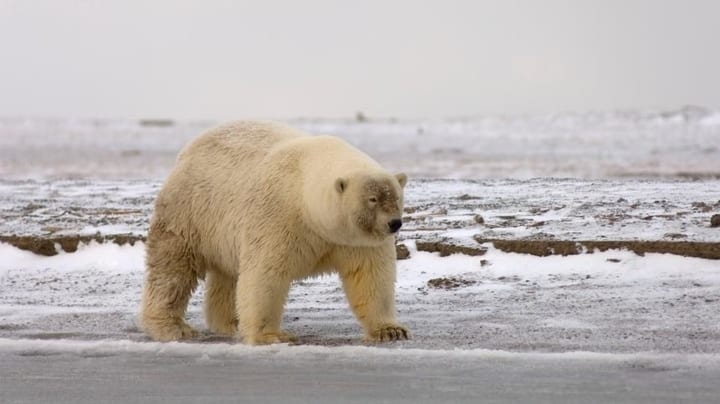
Spiegel
While there have long been stories about odd colored bears in the wild, living on the edge of polar bear territory, none had been DNA tested or confirmed as hybrids until the 2006 bear. And when this first hybrid was found, scientists didn’t necessarily think there was anything particularly interesting about it, but that changed when they found more hybrids…
9. The most recent wild hybrid was caught in 2016 and it led scientists to the truth about pizzly bears
The third hybrid bear was confirmed in 2016, when a hunter found it in Arviat, Canada. By the time this wild hybrid was found, scientists were hypothesizing that climate change was causing the interbreeding. Warming climates are melting Arctic ice, so polar bears aren’t out in the ocean as often.
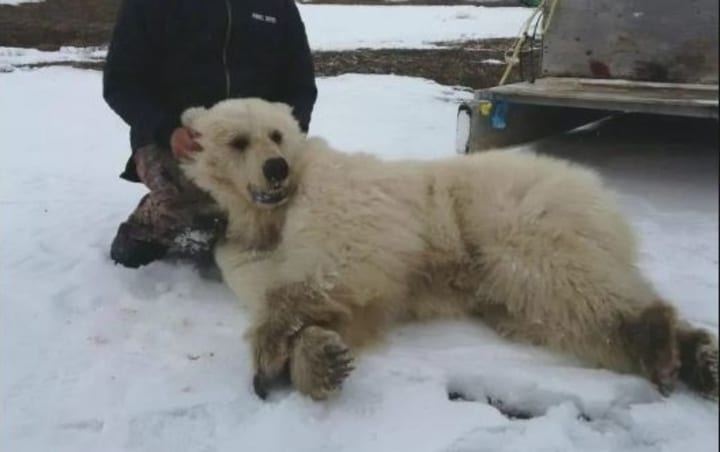
Didji Ishalook
It’s weird that a polar bear would mate with another species, though, because bears can spend days courting each other before actually mating. So, it wouldn’t be just a fluke. After finding these hybrids, scientists began to speculate that they were a good mix of characteristics to adapt to the changing northern temperatures.
10. So are pizzlies highly adapted for a changing environment?
Pizzly bears get physical features from both their parents. Their heads are neither sleek nor boxy. They’ve got long claws and somewhat hairy feet. Lastly, pizzly bear fur is partially hollow and depends where on the body it is. Perhaps these traits make them better adapted to warming temperatures?
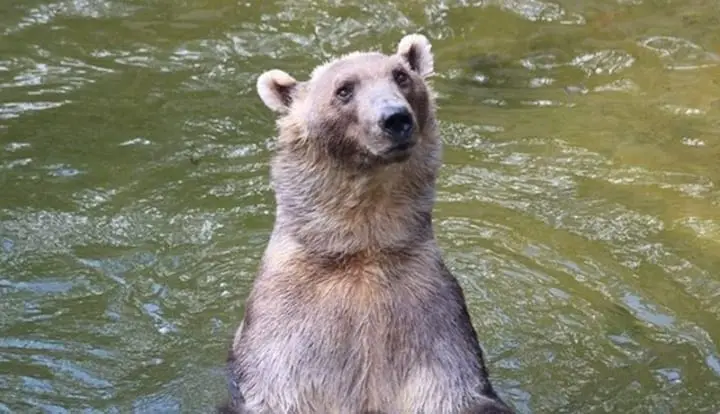
The Dodo
Not so much. It seems that pizzly bears are just poorly adapted to any environment. They aren’t great on ice and they don’t work on land. So despite claims that climate change was making these hybrids more common, a recent study says otherwise. But what animals are the pizzly bear’s parents?
11. DNA tests revealed the parents of the hybrid bear
Back in Ulukhaktok, the government officer thought the bear was a mix between a grizzly bear and a polar bear. DNA testing confirmed that actually, the bear’s mother had been half polar, half grizzly and its father was full grizzly. So this bear was 75 percent grizzly and 25 percent polar bear.
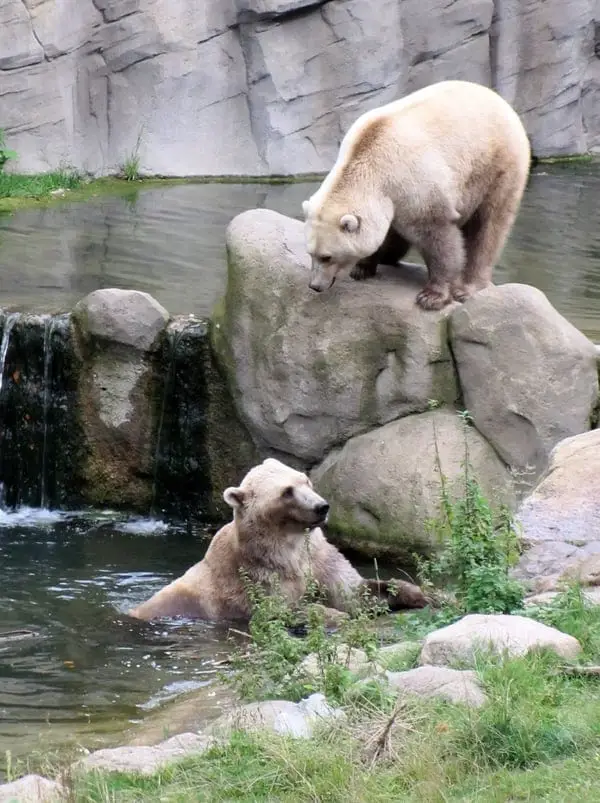
My Polar Bear Friends and Friends of Polar Bears
These hybrids are called either pizzly bears, grolar bears, or nanulak (in Inuit, nanuk means polar bear and aklak means grizzly bear). These bears are very rare, and almost never seen in the wild, and this particular bear was the first evidence that they can even have their own babies. Scientists were puzzled: why are grizzlies and polar bears mating? Recent research shows an unexpected answer…
12. Bear 10960: the mother of all hybrids
In 2017, a group of scientists revealed that all the wild pizzly bears can be traced back to one female polar bear, Bear 10960. They did extensive DNA and genetic testing to figure this out. So it actually wasn’t that polar bears and grizzlies were mating more often; the scale is actually a lot smaller than people thought.
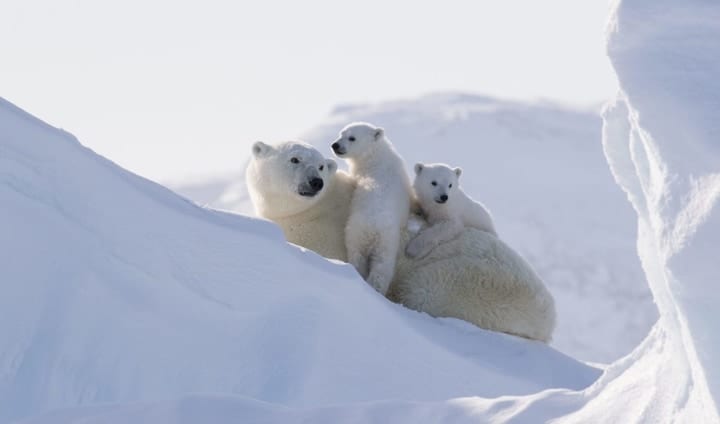
Arctic Kingdom
The female polar bear mated with two separate grizzly bears. She’d even mated with one of them twice, years apart. From this, she’d had a total of three litters, which are normally as small as one to three cubs, with twins the most common. So why did she mate with the two grizzly bears?
13. Maybe she just preferred grizzly bears
It’s a bit unclear why Bear 10960 mated with those grizzlies. Perhaps there were no male polar bears around, so she just took what she could get. When female polar bears are ready to mate, their feet give off a strong scent. They walk around leaving smelly tracks and males normally follow these, placing their own paws in her footprints.
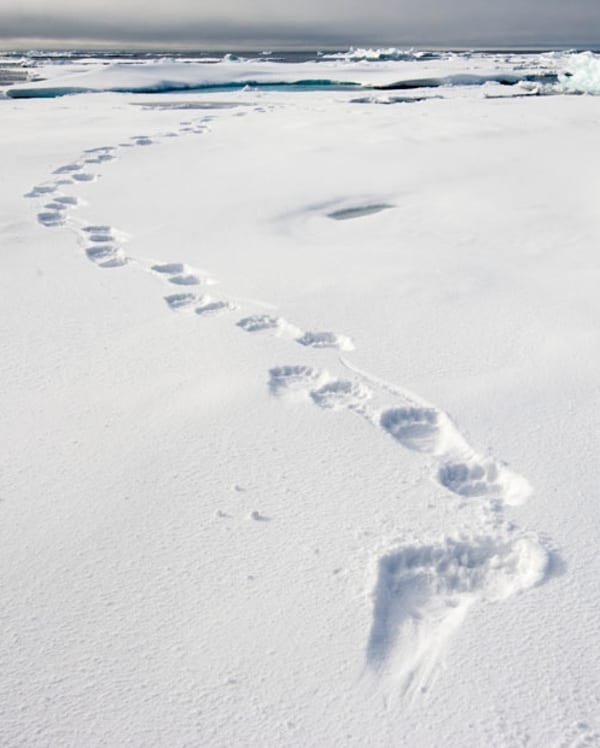
The Telegraph
Maybe the grizzlies found these tracks and followed them? But the strangest part is that she didn’t just do it once, but three times, with years in between. So maybe Bear 10960 just has an unusual preference for grizzly males, which seems even more likely after the most shocking part of the story was discovered.
14. The story turned a little Game of Thrones
Here the pizzly bear story takes a strange twist, because when the scientists found all the hybrids were part of one family, it turned out the family was taking cues from a Game of Thrones script. Bear 10960 must have passed her preference in men to her hybrid daughter, because the daughter mated with the same two grizzly bears her mom did.
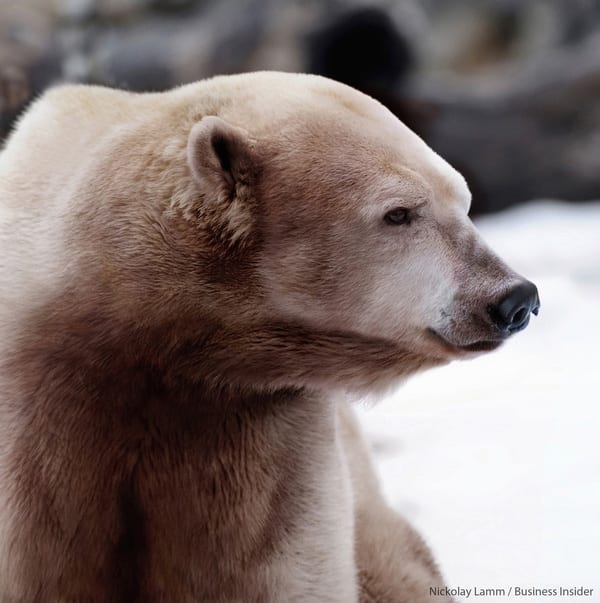
ScienceNordic
Essentially, she mated with her father and her step-father. Nature is wild. So the bear that Kuptana found in 2010 was the grandchild of Bear 10960, aka the incestuous offspring of her daughter. Hey, nature never claimed to always be pretty. So while the scale of the hybridization is a lot smaller than thought, climate change may still be to blame for putting the bears together.
15. The warming climate changes the bears’ homes
Polar bears live in the Arctic Circle, around the North Pole, in Canada, Alaska, Greenland, Norway, and Russia. They prefer icy waters and polar islands, because they hunt in the water. When they’re on land, during parts of summer that have no sea ice, polar bears don’t eat and live off their fat reserves.
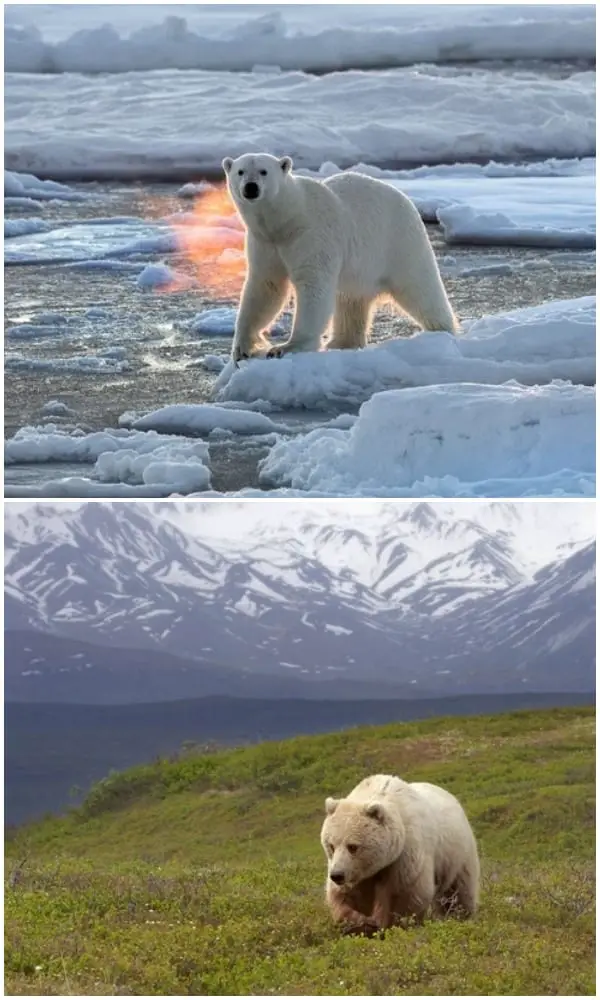
Daily Mail/Gregory Smith
Grizzly bears, a subspecies of brown bear, live in North America, Europe, and Asia in the northern regions. They have a very diverse range of habitats, but in northern Canada, they’ve typically stuck to the mainland and don’t venture to the islands. Here, they spend their time in subarctic forests and tundra. But with rising temperatures, these habitats are changing and the bears may need to move…
16. Grizzlies move north, into polar territory
With warmer summers, polar bears are spending less time on the ice and more time on land, simply because there is no ice to live on. Grizzlies, however, are moving north, into what’s traditionally been polar bear territory. They’ve been seen going across ice to search for food, after waking from hibernation.
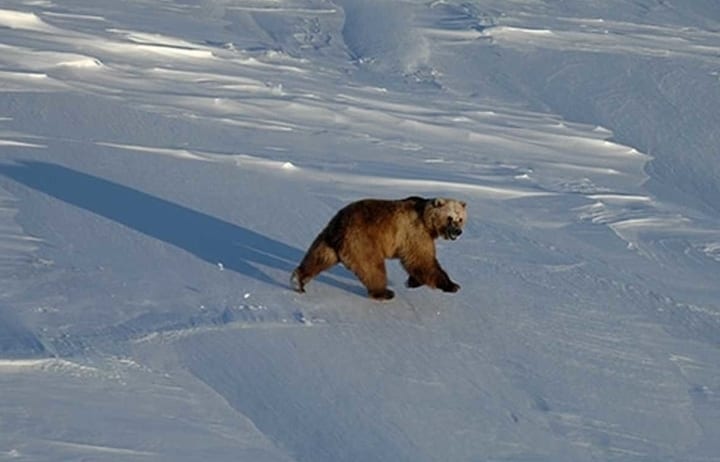
Washington Post
Mostly, it’s male grizzlies that are breaking the norm. They roam far to establish territory, while female grizzlies mostly stay in one area and polar bears don’t venture down into grizzly habitat. The two bear species are now overlapping in the Canadian Arctic and in Siberia. But what does this move mean for the bears?
17. Bears have specialized features for their unique habitats
Polar bears and grizzly bears are both highly adapted to their habitats. For example, polar bear feet are covered in fur to let them easily walk on ice, whereas grizzly feet are just padded. Polar bear heads are sleek to allow them to dive in and out of water easily, while grizzly heads are boxy.
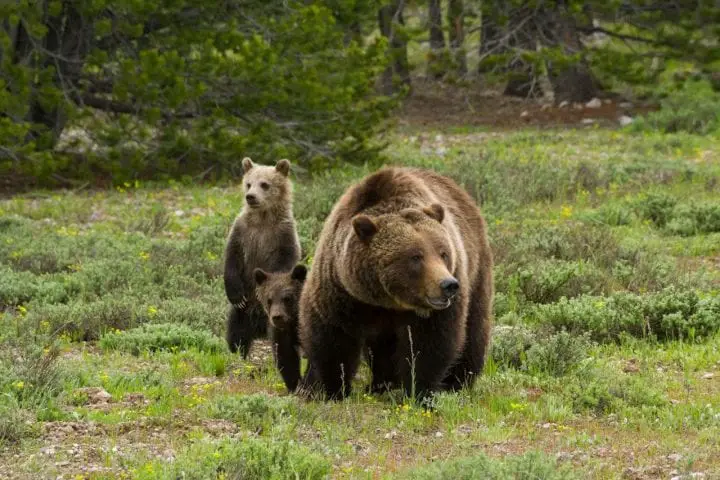
National Geographic
There’s a long list of differences: grizzlies have long claws for digging, polar bears have thick claws for seal hunting and walking on ice. For warmth, polar bears have hollow fur to trap warm air. Since pizzly bears get a mishmash of these characteristics, what do they look like?
18. How to tell a pizzly from a grizzly and a grolar from a polar
While not every pizzly bear looks the same, there are common traits among them. The most obvious indicator of a hybrid is its fur color. Pizzlies are blonde or light brown, neither polar bear white nor grizzly bear brown, and often have dark paws. But they also have other mixed characteristics.
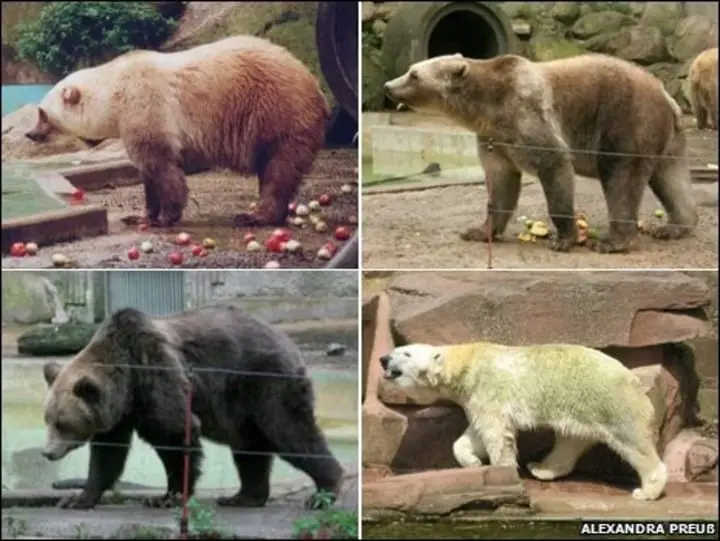
Alexandra Preuß
For instance, a pizzly bear’s body size is in between the large polar bear and smaller grizzly. Plus, hybrids have long necks like polar bears, but shoulder and back humps like a grizzly. They also have a visible tail, which grizzlies don’t have. These characteristics aren’t great for either habitat.
19. What’s it like to be a grolar bear?
So what do these hybrid bears act like? Grizzlies or polar bears? Well, the pizzly cubs were raised separately from their parents just so researchers could figure this out. Tips and Taps behaved more like their polar bear father when they played with toys. And as far as we know, hybrids in the wild also behave more like polar bears.
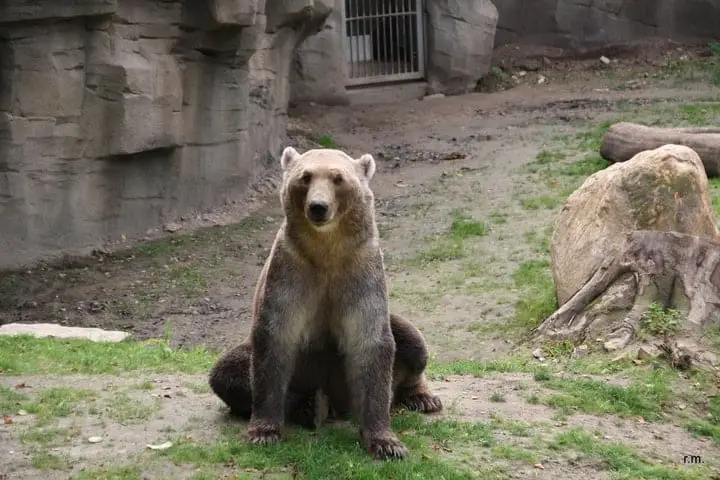
Rosi Bilder
However, since all the hybrids had grizzly fathers, their polar mothers raised the cubs on the ice, as polar bears. What would happen if they had a grizzly mother? We know that hybrids of polar bear fathers and grizzly mothers are possible, since that’s how Tips and Taps came about, but it seems like this has only happened in captivity.
20. Grizzly fathers in the wild
As far as we know, all wild hybrid bears have grizzly fathers, so why are there no polar fathers in the wild? Well, it may be because female grizzlies and male polar bears don’t really go into each other’s territory.
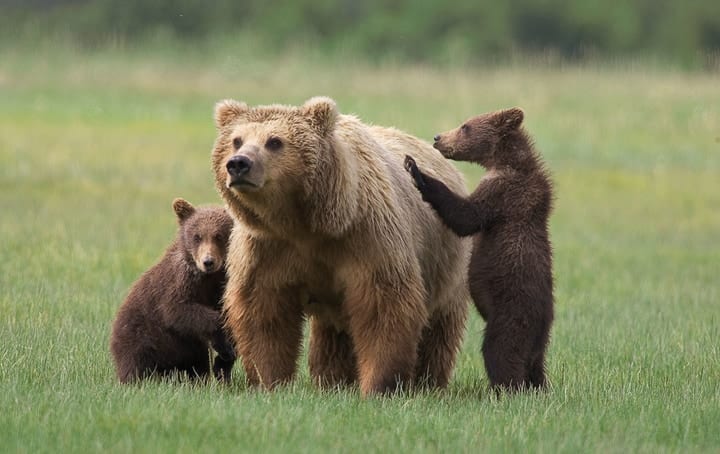
Animalia Life
But there’s also the fact that a lot more male polar bears were hunted than female polar bears, which may have left the opening for Bear 10960 and her paramours. Maybe Bear 10960 just didn’t have any other options. Also, the names grolar and pizzly technically depend on the father. Grolar bears have grizzly fathers, while pizzly bears have polar fathers.
21. Hybrids are different from their parents in one big way
Hybrid bears aren’t behaving just like polar bears, as Kuptana saw when he caught the bear ransacking six cabins. The hybrids are more aggressive than polar bears, and since polar bears seem to be more aggressive than grizzlies, hybrids are meaner than either of their parents.
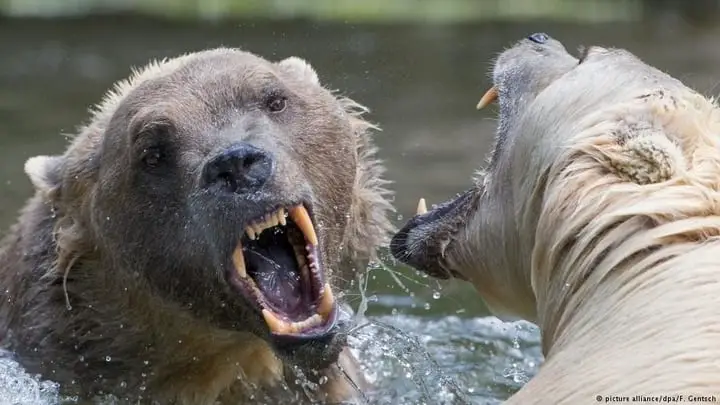
DW
“The hybrids, they aren’t like polar bears. They’re faster, have longer legs. They stand up and look straight at you when they see you; the polar bears, they keep their head down. The polar bear will try to get away. There is more danger with a hybrid,” Pat Epakohak, a hunter from Ulukhakrok, said to Kelsey Eliasson, photographer.
22. So what will happen to the pizzlies?
After a few hybrid bears were found in the Northern Territories islands, people in the Ulukhaktok community began discussing what to do about them. But there were mixed feelings. Some hunters didn’t want hybrids or grizzlies on Victoria Island, wanting instead to hunt them off the island.
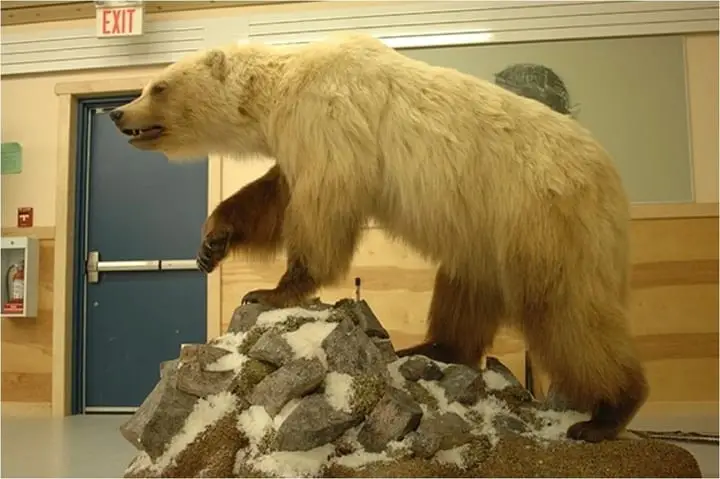
A.E. Derocher/University of Alberta
However, other members of the community thought they could be a good tourist attraction, and thus should be kept alive. But since you can get a lot of money for a hybrid’s skin, this route may be unlikely. For example, the Northern Territories government bought the bear Kuptana killed and put it on display in Ulukhaktok’s community hall. Plus, there probably aren’t many left in the wild.
23. Kuptana’s bear revealed something about hybrid bears
Despite the incestuous bear’s foray into human taboo, her offspring taught us about something new about pizzly bears. Kuptana’s pizzly bear was quite special, because it was the first evidence of a second generation hybrid (the offspring of a hybrid bear) and the fact that the hybrids are fertile.
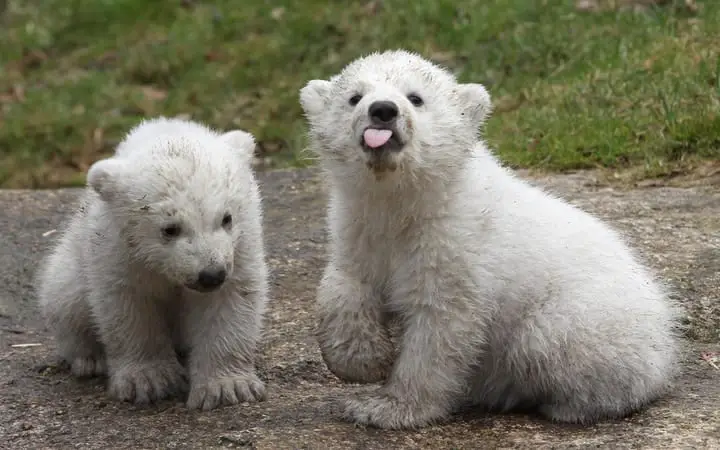
Alexandra Beier
Often, hybrid animals can’t have their own babies because they’re infertile, which is actually something scientists use to define a species. But species aren’t as cut and dry as you may assume; there’s actually some gray area and it can be hard to determine if two animals are the same species or not.
24. Defying the biological species concept
One rule scientists have used is the biological species concept, which defines species by their ability to reproduce. This concept assumes that members of the same species can mate and have fertile offspring, but that members of different species either can’t physically mate or can’t make fertile offspring.
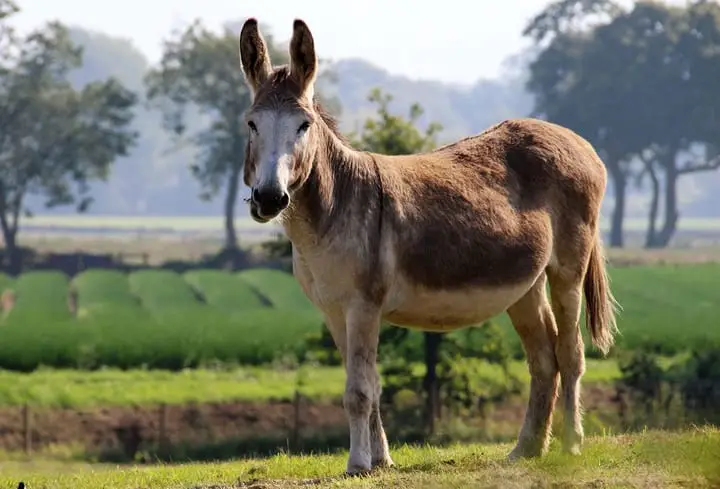
EquineNow
For example, a horse and a donkey can mate and make a mule baby. But the mule can’t have any babies of its own, because its parents had different numbers of chromosomes, which can’t align correctly in the mule. But this species concept isn’t perfect, because of cases like grizzly and polar bears, which are clearly different species, but can have fertile offspring.
25. Actually, polar bears and grizzlies hybridized in the past
So while the recent hybrids are all the result of three bears, one polar and two grizzlies, thousands of years ago other polar bears and grizzlies were mating. Today’s grizzlies and polar bears have bits of each other’s genes in their DNA, depending on where they live.
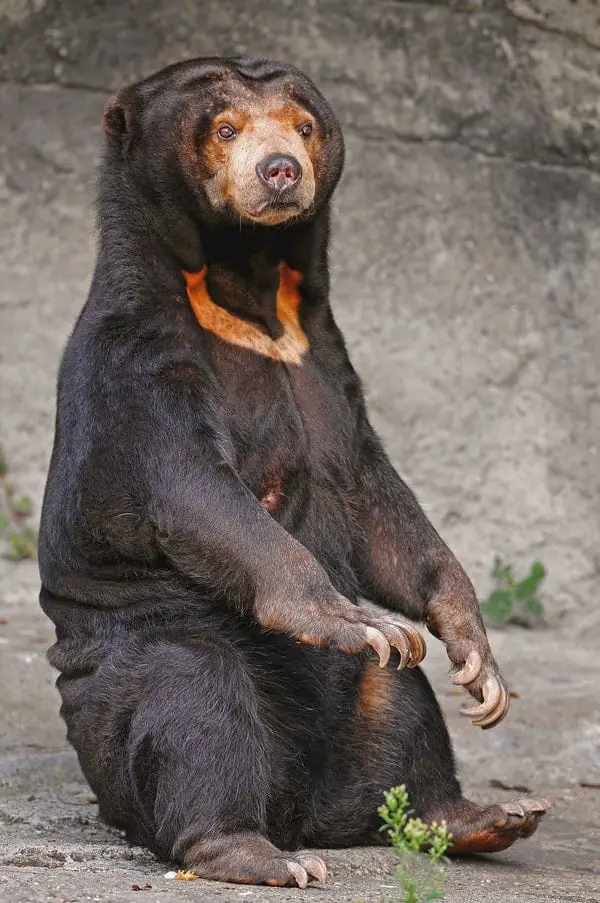
Wikipedia
Some grizzly bear populations in southeastern Alaska have as much as 10 percent of their genome from polar bears. And it isn’t just grizzlies and polar bears, other bear species have mixed DNA, too. Sun bears have some polar bear DNA, which is weird since they don’t live anywhere near each other. Scientists think brown bears transferred the polar bear genes to the sun bears.
26. A history of Panthera hybridization
Bears aren’t the only animals that have hybridization in their past. Jaguars, too, show evidence of other large cats in their DNA. They have optic nerve formation genes from lions, which seem to have improved their vision. Hybridization introduces new genes into a population, which can help the species adapt and evolve to survive better.
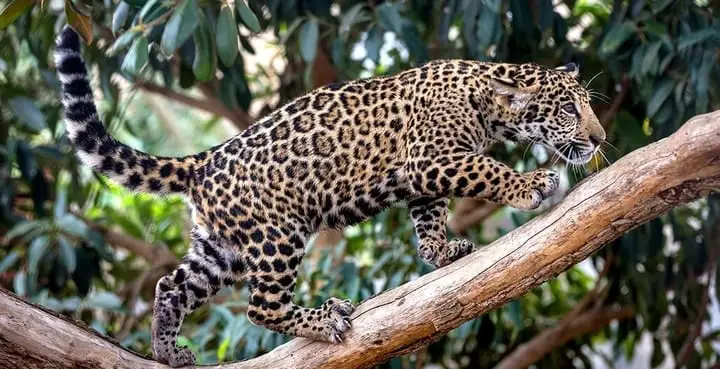
San Diego Zoo
The five big cats of the genus Panthera (snow leopards, tigers, leopards, lions, and jaguars) have lots of evidence of interbreeding in their past: lions and snow leopards, tigers and leopards, and of course lions and jaguars. Of course, this all happened a million or more years ago, but the cross breeding left its mark in all of their DNA.
27. The hybrid coyotes of the east
Along the east coast, people are seeing a much more recent hybrid: the “coywolf.” The eastern coyotes have DNA from both dogs and wolves. In the north, the coyotes have about 60 to 84 percent coyote DNA, 8 to 25 percent wolf DNA, and 8 to 11 percent dog DNA. As you go south, the coyotes tend to have more dog DNA than wolf DNA, but some have no wolf in them at all.
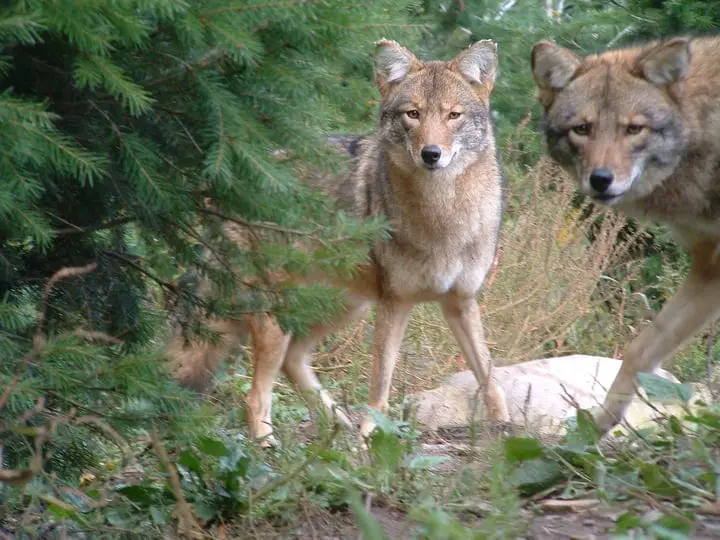
Jonathan Way
It seems that the wolf DNA dates back to 100 years ago, when there were so few wolves in the Great Lakes area that they must have turned to coyotes for breeding. And 50 years ago, coyotes were moving to the east coast, where they likely could not find any mates except feral dogs. But the hybrids don’t stop there, even you could be a hybrid.
28. Intermingling humans of the past
Not only do lions and tigers and bears have hybridization in their past, humans do too. Grizzly bears and polar bears diverged from each other a few hundred thousand years ago, around the same time that we diverged from Neanderthals. But then about 30,000 years ago, our human ancestors interbred with Neanderthals, which is still evident in many people’s DNA today.
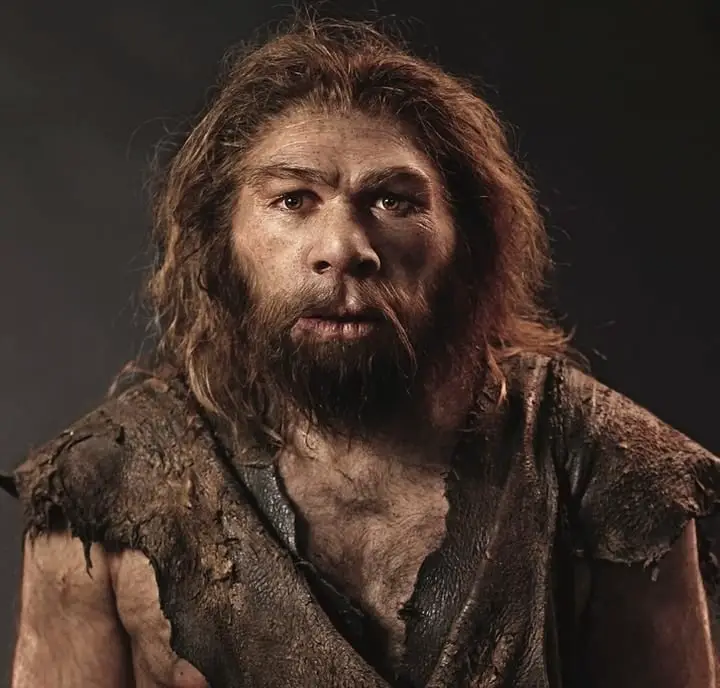
The New Yorker
But it didn’t stop at Neanderthals, some ancestral humans interbred with another human species: the Denisovans. Plus, not too long ago, researchers found the fossilized remains of a child of a Neanderthal and Denisovan. So we weren’t the only ones cross breeding.
29. Will there be more wild pizzlies?
So hybridization can be important in an animal’s evolution and history, but that doesn’t seem to be the case for these recent grolar bear hybrids. So far, it’s been isolated enough that it likely will not have a lasting impact on either polar bear or grizzly populations. Plus, while hybridization can help by providing some new genes, these half and half bears aren’t suited well for either environment.
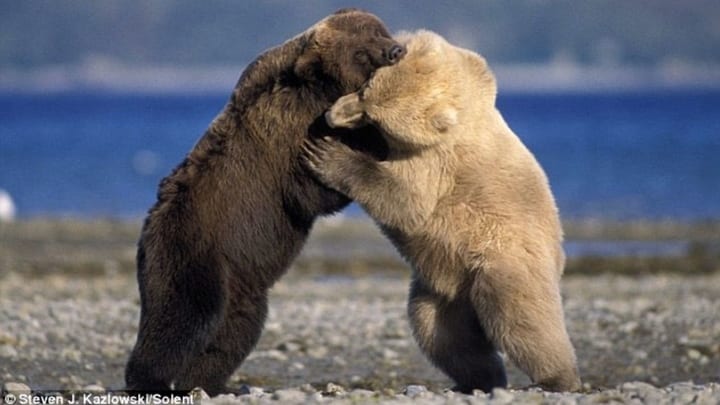
Steven J Kazlowski
But since we can’t say why Bear 10960 and her daughter mated with those grizzlies in the first place, we can’t count out the possibility that other bears may follow in their footsteps in the future. Either way, it’s definitely too soon to say if climate change is making polar bears and grizzly bears interbreed.
30. Future surrogate mothers?
While polar bears may not be mating with grizzlies to save themselves from climate change, scientists might turn to grizzlies if the need is dire. In the event that polar bear numbers decline catastrophically, scientists may freeze their sperm and eggs and use female grizzly bears as surrogate mothers.
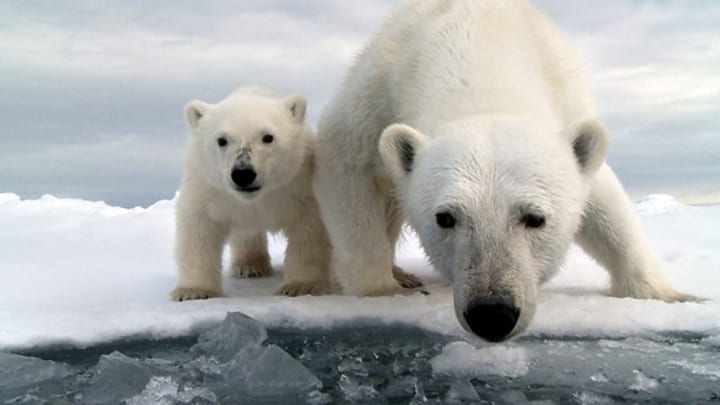
BBC
However, this is not likely to happen in the next several decades, since other conservation methods will surely be tried first. But can you imagine the female grizzly’s surprise when she sees her polar bear cubs? Hopefully they can still learn how to be polar bears, if there’s any ice left.